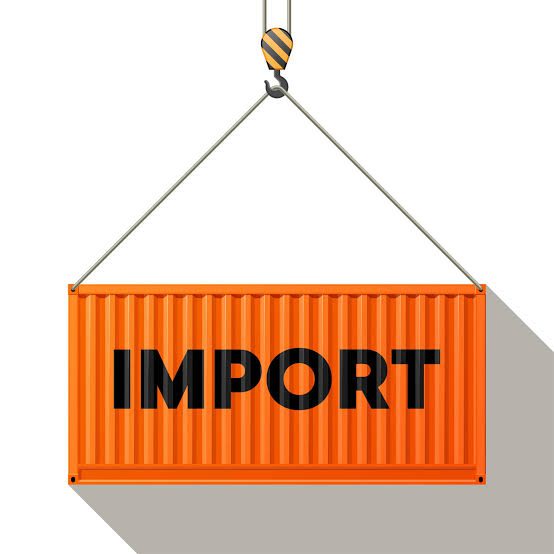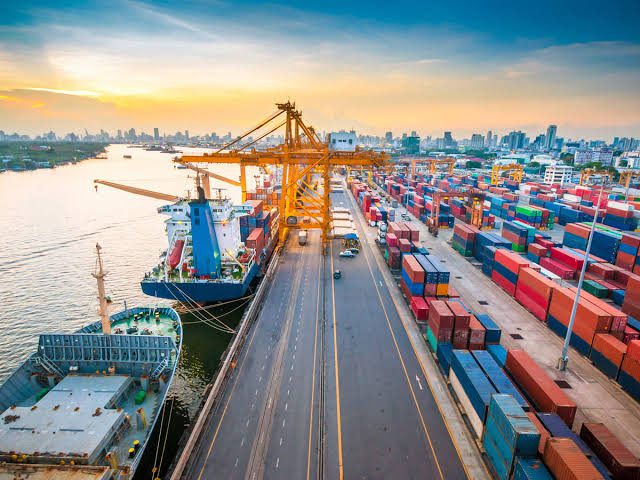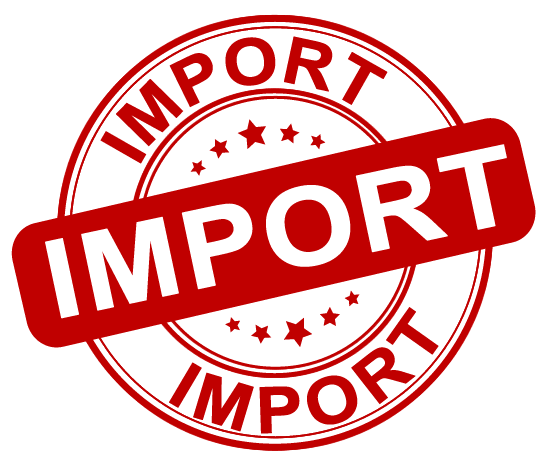Taxing imported goods, commonly known as import tariffs or duties, represents a fundamental aspect of economic policy where governments impose additional charges on products entering their national borders from foreign countries.
This practice serves multiple purposes, ranging from protecting domestic industries to generating revenue for the government and influencing trade dynamics on a global scale. Understanding the implications of taxing imported goods requires examining both the general principles and specific aims of such policies, particularly within the context of the United States.
Import tariffs fundamentally alter the cost structure of imported goods, effectively raising their prices in the domestic market. By doing so, governments aim to provide a competitive advantage to domestically produced goods, thereby shielding local industries from foreign competition.
This protectionist approach is often justified as a means to safeguard jobs, support economic growth, and preserve national security interests by maintaining strategic industries within national borders. In addition to protecting domestic industries, import tariffs serve as a significant source of revenue for governments.
The revenue generated from these tariffs contributes to national budgets, funding public services, infrastructure projects, and various government initiatives. In the United States, for example, tariffs historically have been a notable source of revenue, especially during periods of economic expansion or when there is a need to address budget deficits.
Beyond economic protectionism and revenue generation, the imposition of import tariffs is also driven by strategic trade policy objectives. The U.S. government, like many others, employs tariffs as a tool to achieve broader economic and geopolitical goals.
For instance, tariffs can be used to address trade imbalances by reducing imports and encouraging domestic production. They may also serve as a negotiating lever in international trade negotiations, incentivizing trading partners to lower their trade barriers or comply with international standards and agreements.
Furthermore, the U.S. government’s aim in taxing imported goods extends to fostering fair trade practices and leveling the playing field for American businesses. By imposing tariffs on goods perceived to be unfairly subsidized or sold below market value (a practice known as dumping), the U.S. seeks to deter unfair competition and ensure that American companies can compete on equal terms globally.
This approach not only protects U.S. industries from unfair trade practices but also supports the enforcement of intellectual property rights and labor standards, promoting a more equitable and sustainable global trading system.
In recent years, the U.S. government’s approach to taxing imported goods has been influenced by shifting geopolitical dynamics and evolving trade relationships. Trade policies under different administrations have reflected varying priorities, from prioritizing domestic manufacturing and job creation to addressing perceived trade deficits and promoting reciprocity in market access.
For instance, tariffs imposed on certain imports under the Trump administration were aimed at reducing trade imbalances and bringing manufacturing jobs back to the United States. Moreover, the U.S. government’s aim in taxing imported goods includes addressing national security concerns and safeguarding critical industries.
Certain imports, particularly those related to defense, technology, and infrastructure, may be subject to tariffs or other trade restrictions to protect sensitive technologies and capabilities from foreign exploitation or dependence. This strategic use of tariffs underscores the broader implications of trade policy on national sovereignty, security, and economic resilience in an increasingly interconnected global economy.
In addition to economic and strategic objectives, the U.S. government considers social and environmental factors when taxing imported goods. Tariffs can be used to promote sustainability goals by incentivizing environmentally friendly production practices and ensuring compliance with international environmental standards.
Similarly, tariffs may address concerns related to labor rights and human rights abuses by discouraging imports produced under exploitative conditions or without adequate worker protections. Nevertheless, the U.S. government’s approach to taxing imported goods is not without challenges and considerations.
Critics argue that tariffs can increase consumer prices, reduce consumer choice, and disrupt global supply chains, ultimately harming businesses and consumers alike. Moreover, retaliatory tariffs imposed by trading partners in response to U.S. tariffs can escalate trade tensions, disrupt international commerce, and have adverse effects on global economic stability.
Read Also: Finance Definition and All to Know About Finance
How Does Taxing Imported Goods Protect Domestic Industries?

Taxing imported goods, through the imposition of import tariffs or duties, is a key economic policy tool employed by governments worldwide to protect domestic industries from foreign competition. This practice aims to create a level playing field for local producers, safeguard jobs, promote economic growth, and maintain national security interests.
1. Impact on Competitiveness and Pricing: One of the primary ways taxing imported goods protects domestic industries is by altering the competitive landscape within the domestic market. By imposing tariffs on imported products, governments increase the cost of these goods relative to domestically produced alternatives.
This price differential makes locally produced goods more attractive to consumers and businesses, thereby boosting demand for domestic products. This increased demand helps to sustain and grow domestic industries by ensuring they can compete effectively against cheaper imports.
For example, suppose a country’s domestic steel industry faces competition from cheaper steel imports subsidized by foreign governments. By levying tariffs on these imported steel products, the government can raise their prices in the domestic market. This action makes domestically produced steel more price-competitive, supporting local steel manufacturers and protecting jobs in the industry.
2. Preserving Jobs and Industry Employment: Protecting domestic industries through import tariffs is often justified as a means of preserving jobs and supporting employment within strategic sectors of the economy. Industries such as manufacturing, agriculture, and technology are critical for economic stability and national resilience.
By shielding these industries from foreign competition, governments aim to prevent job losses, maintain a skilled workforce, and promote economic prosperity. For instance, in the automotive sector, import tariffs can help protect domestic automobile manufacturers from foreign competitors who may benefit from lower production costs or government subsidies.
This protection enables domestic automakers to continue investing in research and development, innovation, and production capacity, thereby sustaining jobs throughout the supply chain, including in manufacturing, logistics, and support services.
3. Stimulating Domestic Investment and Innovation: Taxing imported goods can also stimulate domestic investment and innovation by providing incentives for businesses to expand production capacity, improve product quality, and develop new technologies.
When domestic industries face reduced competition from imports, they are more likely to invest in upgrading equipment, adopting advanced manufacturing techniques, and enhancing workforce skills. These investments contribute to productivity gains, technological advancement, and overall industry competitiveness in the global marketplace.
For example, in the pharmaceutical industry, import tariffs on foreign-made drugs can encourage domestic pharmaceutical companies to invest in research and development of new medications, production facilities, and regulatory compliance. This investment not only strengthens the domestic pharmaceutical sector but also enhances its capacity to meet domestic demand and compete internationally.
4. Protecting Against Unfair Trade Practices: Taxing imported goods serves as a safeguard against unfair trade practices such as dumping and subsidies, where foreign producers sell goods below their cost of production or receive government financial assistance to gain market share.
These practices can distort global trade dynamics, undermine fair competition, and threaten the viability of domestic industries. Import tariffs provide a mechanism to offset the advantages enjoyed by foreign producers engaged in unfair trade practices, thereby protecting domestic industries from economic harm.
For instance, if a foreign country subsidizes its agricultural exports, leading to artificially low prices for imported agricultural products, the importing country may impose tariffs to counteract these subsidies. By doing so, the government protects its domestic farmers from unfair competition, ensures a fair market price for locally produced agricultural goods, and maintains food security and self-sufficiency.
5. Promoting Strategic Economic Sectors: Governments may use import tariffs strategically to promote and develop key economic sectors deemed essential for national security, technological innovation, or sustainable development.
These sectors may include defense, advanced manufacturing, renewable energy, and high-tech industries critical to maintaining economic sovereignty and global competitiveness. By protecting these strategic sectors from foreign competition, governments aim to build resilience, reduce dependency on imports, and foster long-term economic growth.
For example, in the aerospace industry, import tariffs can support domestic aircraft manufacturers by limiting competition from foreign aircraft producers benefiting from government subsidies or lower production costs. This protection encourages investment in domestic aerospace capabilities, promotes innovation in aircraft design and technology, and strengthens the country’s position as a global leader in aerospace manufacturing.
6. Addressing Trade Imbalances: Taxing imported goods can also be used to address trade imbalances by reducing imports and promoting greater parity between exports and imports. Persistent trade deficits, where a country imports more goods than it exports, can strain domestic industries and weaken economic stability over time. Import tariffs provide a mechanism to mitigate trade imbalances by encouraging domestic consumption of locally produced goods, reducing reliance on foreign imports, and supporting export-oriented industries.
For instance, if a country consistently imports more electronic goods than it exports, leading to a trade deficit in the electronics sector, the government may impose tariffs on imported electronics to stimulate domestic production, increase export competitiveness, and narrow the trade gap. This strategic use of tariffs helps rebalance trade flows, strengthen the economy’s external position, and enhance overall economic resilience.
7. Challenges and Considerations: While taxing imported goods offers various benefits for protecting domestic industries, it also presents challenges and considerations that policymakers must navigate. Critics argue that import tariffs can lead to higher consumer prices, reduced consumer choice, and inefficiencies in resource allocation.
Moreover, retaliatory tariffs imposed by trading partners in response to protectionist measures can escalate trade tensions, disrupt global supply chains, and adversely affect global economic stability. Additionally, the effectiveness of import tariffs in achieving economic objectives depends on various factors, including global market dynamics, technological advancements, and changes in consumer preferences.
Rapid shifts in trade patterns, advancements in digital commerce, and geopolitical developments can influence the efficacy and relevance of tariff policies over time, necessitating adaptive and responsive trade policy frameworks.
Why Might the US Government Use Taxing Imported Goods to Influence Foreign Policy?

Taxing imported goods is a strategic tool used by the US government to influence foreign policy and achieve various economic and political objectives. The imposition of tariffs, which are taxes on imported goods, serves multiple purposes such as correcting trade imbalances, addressing unfair trade practices, promoting domestic industries, and pursuing broader geopolitical goals.
By taxing imported goods, the US can exert pressure on other countries, safeguard its economy, and enhance its global influence. One of the primary reasons for taxing imported goods is to correct trade imbalances. When the US imports more than it exports, it results in a trade deficit, which can have negative economic consequences.
By imposing tariffs, the government can make imported goods more expensive, thereby reducing their attractiveness to American consumers. This encourages consumers to purchase domestically produced goods, boosting local industries and reducing the trade deficit.
Additionally, taxing imported goods can prompt other countries to buy more American products, fostering a more balanced trade relationship and enhancing economic reciprocity. For example, the US has historically used tariffs on imported steel to protect its domestic steel industry and reduce reliance on foreign steel, aiming to correct imbalances and strengthen local production capabilities.
Addressing unfair trade practices is another significant reason for taxing imported goods. Foreign countries sometimes engage in practices such as dumping—selling goods at below market value to undermine domestic producers—or subsidizing their industries to gain a competitive edge. By taxing imported goods from such countries, the US can counteract these unfair practices and create a level playing field for American businesses.
This not only protects domestic industries from unfair competition but also upholds the principles of free and fair trade, ensuring that American products can compete on merit in the global market. For instance, tariffs on Chinese solar panels were imposed to counteract alleged subsidies by the Chinese government, which were seen as giving Chinese companies an unfair advantage over American solar manufacturers.
Promoting domestic industries is closely linked to the goals of correcting trade imbalances and addressing unfair trade practices. Taxing imported goods makes foreign products more expensive, which can stimulate demand for domestically produced alternatives.
This protectionist measure is especially important for emerging industries that need time to grow and become competitive internationally. By shielding these industries from foreign competition through tariffs, the government can foster innovation, maintain high employment levels, and promote economic growth.
This approach also strengthens national security, as a robust domestic industrial base is crucial for producing essential goods and technologies. The US automotive industry, for example, has benefited from tariffs on imported vehicles, which help protect American jobs and promote technological advancements within domestic car manufacturers.
Taxing imported goods also plays a crucial role in achieving broader geopolitical goals. In foreign policy, economic measures like tariffs can serve as leverage to influence the behavior of other nations. For instance, the US might impose tariffs on a country to pressure it into changing its policies on issues such as human rights, environmental standards, or military aggression.
By creating economic discomfort, taxing imported goods can incentivize the targeted country to comply with international norms or US foreign policy objectives. This form of economic diplomacy allows the US to address critical issues without resorting to military action, promoting stability and peace through economic means.
A notable example is the use of tariffs on Russian goods in response to geopolitical tensions and actions perceived as aggressive, aiming to pressure Russia into altering its foreign policy stance. Moreover, tariffs can serve as a bargaining chip in international negotiations.
When negotiating trade agreements or renegotiating existing ones, the threat or actual imposition of tariffs on imported goods can be used to extract concessions from other countries. These concessions might include better market access for American goods and services, stronger intellectual property protections, or commitments to reduce trade barriers.
The strategic use of taxing imported goods in negotiations helps the US secure favorable terms that benefit its economy and enhance its competitive position globally. The renegotiation of NAFTA into the USMCA involved the use of tariffs on Canadian and Mexican goods to bring both countries to the table and secure more favorable terms for American workers and industries.
Beyond immediate economic and geopolitical objectives, taxing imported goods can also signal the US’s commitment to certain values and priorities. For example, imposing tariffs on goods from countries with poor labor practices or lax environmental regulations underscores the US’s dedication to promoting ethical standards and sustainable development.
This signaling function aligns US economic policy with its broader values, reinforcing its leadership role on the global stage. Tariffs on goods produced in countries with lax environmental standards, for example, signal a commitment to sustainability and encourage other nations to adopt more environmentally friendly practices to maintain trade relations.
The imposition of tariffs on imported goods also has significant domestic political implications. By protecting domestic industries and jobs, tariffs can garner political support from key constituencies, such as labor unions and manufacturing sectors. This support can be crucial for elected officials, particularly in regions heavily dependent on industries vulnerable to foreign competition.
Thus, taxing imported goods can be seen as a political strategy to maintain economic stability and support within the US, which in turn strengthens the government’s ability to pursue its broader foreign policy goals. The steel and aluminum tariffs, for example, were partly aimed at winning political support from industrial regions in the Midwest, which are critical for electoral success.
However, the use of tariffs to tax imported goods is not without its complexities and potential drawbacks. While they can protect domestic industries in the short term, tariffs can also lead to higher prices for consumers and provoke retaliatory measures from other countries. These retaliatory measures can escalate into trade wars, harming global trade and economic growth.
Therefore, the US must carefully balance the use of tariffs to achieve foreign policy objectives without triggering adverse economic consequences. The trade war with China, involving reciprocal tariffs, illustrated the potential for significant economic disruption and the need for careful calibration of tariff policies.
Read Also: Why You Might Consider Buying Jewelry from GLD Shop
What Are the Economic and Social Impacts of Taxing Imported Goods?

Taxing imported goods, through the imposition of tariffs or duties, has significant economic and social impacts that reverberate across domestic industries, consumer behavior, government revenues, and international trade relations.
These impacts encompass a wide range of consequences, both intended and unintended, which shape economic policies, market dynamics, and societal outcomes. Understanding the economic and social implications of taxing imported goods involves examining various dimensions, from industry protection and consumer welfare to government finances and global trade dynamics.
Economic Impacts:
1. Protection of Domestic Industries: Taxing imported goods is primarily intended to protect domestic industries from foreign competition. By increasing the cost of imported products relative to domestic alternatives, tariffs provide a competitive advantage to local producers.
This protection supports industries crucial to economic stability, employment, and technological innovation. For example, tariffs on steel and aluminum protect domestic manufacturers from subsidized imports and ensure a level playing field for American producers.
2. Job Creation and Preservation: Protecting domestic industries through taxing imported goods helps preserve existing jobs and encourages job creation within strategic sectors of the economy. Industries such as manufacturing, agriculture, and technology benefit from reduced competition from cheaper imports, thereby maintaining employment levels and supporting livelihoods across the supply chain. This impact is particularly significant in regions heavily reliant on specific industries susceptible to foreign competition.
3. Stimulus for Domestic Investment and Innovation: Taxing imported goods can stimulate domestic investment and innovation by incentivizing businesses to invest in production capacity, research, and development. Facing reduced competition from imports, domestic industries may allocate resources towards improving efficiency, upgrading technology, and developing new products. This investment contributes to productivity gains, technological advancement, and long-term competitiveness in global markets.
4. Revenue Generation for Government: Taxing imported goods serves as a revenue source for governments, contributing to national budgets and funding public services, infrastructure projects, and social welfare programs.
The revenue generated from tariffs can be substantial, depending on the volume and value of imports subject to taxation. Governments may strategically allocate tariff revenues to prioritize economic development, address fiscal deficits, or invest in healthcare, education, and other essential services.
5. Trade Balances and Current Account Deficits: Taxing imported goods can influence trade balances by reducing imports and narrowing trade deficits, where a country imports more goods than it exports. By discouraging imports through tariffs, governments aim to promote domestic production, increase exports, and enhance the overall balance of trade. This rebalancing of trade flows supports economic stability and reduces dependency on foreign goods, contributing to long-term economic resilience.
Social Impacts:
1. Consumer Prices and Affordability: One of the most direct social impacts of taxing imported goods is its effect on consumer prices and affordability. Tariffs increase the cost of imported products, which can lead to higher retail prices for consumers.
This impact is particularly significant for goods with limited domestic alternatives or those essential for everyday life, such as food, clothing, and electronics. Higher prices may reduce consumer purchasing power and affect household budgets, disproportionately impacting low-income families.
2. Consumer Choices and Market Access: Taxing imported goods influence consumer choices by altering the availability and affordability of imported goods in domestic markets. Higher tariffs may limit the variety of products available to consumers, reduce competition among suppliers, and potentially lower product quality as domestic producers face less competitive pressure. Consumers may also face restricted access to specialized or niche products not produced domestically, impacting preferences and purchasing decisions.
3. Income Distribution and Equity: The distributional impact of taxing Imported goods varies across income groups, with lower-income households typically bearing a larger burden relative to their income levels. Higher consumer prices resulting from tariffs may exacerbate income inequality by disproportionately affecting those with limited financial resources. Policymakers must consider these equity concerns when designing tariff policies to ensure they do not unduly burden vulnerable populations or exacerbate socioeconomic disparities.
4. Employment Dynamics and Labor Markets: Protecting domestic industries through taxing imported goods influences employment dynamics and labor markets by preserving jobs in sectors vulnerable to foreign competition.
Industries shielded from imports may experience stable or growing employment opportunities, supporting local economies and reducing reliance on unemployment assistance programs. However, tariffs may also lead to job losses in industries reliant on imported inputs or facing retaliatory measures from trading partners.
5. Environmental and Ethical Considerations: Taxing imported goods can promote environmental sustainability and ethical production practices by discouraging imports produced under environmentally harmful conditions or with exploitative labor practices.
Governments may impose tariffs to incentivize compliance with international environmental standards, promote sustainable sourcing, and ensure products meet ethical labor criteria. This social impact aligns tariff policies with public expectations for responsible consumption and corporate accountability.
Global Trade Dynamics:
1. Trade Relations and Diplomatic Relations: Taxing imported goods can strain international trade relations and diplomatic ties between countries. Measures involving taxing imported goods may provoke retaliatory actions from trading partners, leading to trade disputes, escalating tensions, and disrupting global supply chains. Diplomatic negotiations and international agreements play a crucial role in mitigating trade conflicts and fostering cooperative solutions that promote mutual trade benefits and economic stability.
2. Market Access and Competitiveness: Taxing imported goods affects market access and competitiveness by influencing the cost and availability of imported goods in foreign markets. Foreign producers facing higher tariffs may encounter reduced demand for their products, limiting export opportunities and market expansion. This impact underscores the interconnectedness of global trade dynamics and the importance of fair competition, market openness, and reciprocal trade relations in fostering sustainable economic growth.
3. Supply Chain Resilience and Dependency: Taxing imported goods can disrupt global supply chains by altering sourcing decisions, production networks, and logistics strategies for businesses operating in international markets.
Increased taxing of imported goods may prompt companies to reassess supply chain resilience, diversify sourcing locations, or relocate production facilities to mitigate tariff-related risks. These adjustments aim to enhance supply chain flexibility, reduce dependency on specific regions or suppliers, and mitigate disruptions from geopolitical uncertainties or trade policy changes.
Challenges and Considerations:
1. Trade War Risks and Escalation: The escalation of taxing imported goods between countries can lead to trade wars characterized by reciprocal tariff increases, retaliatory measures, and heightened economic uncertainties. Trade conflicts pose risks to global economic stability, disrupt business operations, and hinder prospects for international cooperation on shared challenges such as climate change, public health, and technological innovation.
2. Impact on Business Competitiveness: Businesses operating in import-dependent industries may face challenges maintaining competitiveness and profitability due to higher input costs resulting from tariffs. Increased production expenses can erode profit margins, limit investment in growth initiatives, and constrain business expansion opportunities. Companies may seek operational efficiencies, innovate product offerings, or advocate for tariff exemptions to mitigate these economic pressures.
3. Regulatory Complexity and Compliance Costs: Taxing imported goods introduce regulatory complexity and compliance costs for businesses involved in international trade. Companies must navigate tariff classifications, documentation requirements, and customs procedures to ensure compliance with import regulations. These administrative burdens may disproportionately affect small and medium-sized enterprises (SMEs) with limited resources and expertise in managing global trade complexities.
4. Consumer and Business Uncertainty: Taxing imported goods contributes to uncertainty for consumers, businesses, and investors by introducing unpredictability into market conditions and economic forecasts. Uncertainty surrounding future changes in taxing imported goods, trade negotiations, or geopolitical developments can influence consumer confidence, business investment decisions, and financial market volatility. Effective communication and transparent trade policy frameworks are essential to mitigate uncertainty and support economic resilience.
In conclusion, the most likely aim of the US government in taxing imported goods is multifaceted, targeting the protection of domestic industries, the achievement of foreign policy objectives, and the management of economic and social impacts.
By imposing tariffs, the US can correct trade imbalances, address unfair trade practices, promote domestic industries, and pursue broader geopolitical goals. Taxing imported goods provides leverage in international negotiations, signals the US’s commitment to certain values, and garners domestic political support.
While the use of tariffs carries inherent risks, their strategic application allows the US to exert economic pressure, achieve policy objectives, and maintain its leadership role on the global stage. Through careful and deliberate use, taxing imported goods remains an essential instrument in the US’s economic and foreign policy toolkit, balancing economic interests with broader international goals.
Read Also: How Brain of Girls and Boys Produces Equal Math Ability






